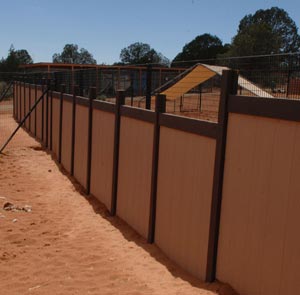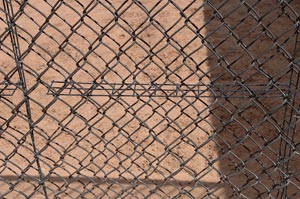
How to Use Visual Barriers for Dog Reactivity and Fence Running
A visual barrier is something opaque, such as a curtain or tarp, that prevents a dog from seeing what’s on the other side of a fence or window. Most often, visual barriers are used to help manage dog barrier aggression and frustration. When dogs can’t see a trigger, such as a person or another dog, on the other side of a barrier, they’re less likely to become reactive.
Benefits of dog visual barriers
There are several potential benefits of visual barriers for dogs:
- Prevent injury: Some dogs might run, jump, and twist at a see-through barrier, which can result in injury.
- Stop overexercise: Some dogs are prone to running along barriers when they can see to the other side — e.g., fence running — which might result in overexercise and excessive weight loss.
- Promote safety: Visual barriers can help to prevent bites from occurring through a fence.
- Manage stress: See-through barriers can cause some dogs to be in an overly anxious or excited state.

Dog fence running
Fence running refers to when dogs run back and forth at a fence line. This behavior is often triggered by something the dog sees on the other side, such as a passing person, dog, or car. Visual barriers remove the stimuli and can help minimize this behavior.
If your fence is see-through, such as a chain-link fence, consider adding opaque material or tarps to create a visual barrier. Moreover, if aggression at the fence line is a problem, you could attach an additional layer of solid fencing (creating a double fence) if your dog — o r the neighbor’s dog — is willing to bite through soft material. Or you could set up a freestanding run with no shared fence lines.
r the neighbor’s dog — is willing to bite through soft material. Or you could set up a freestanding run with no shared fence lines.
Home starts with you
Another thing to try: Set up path obstacles along the fence line. The goal is to help the dog decide to run less. Faced with path obstacles, many dogs decide that fence-line running is not as exciting as it once was.
Here are some considerations before putting up visual barriers along a fence:
- Visual barriers are not allowed in every community.
- The cost of construction and maintenance could be considerable.
- Some dogs will continue to have the same behavior even with a barrier in place, or they might develop other undesirable behaviors that then need to be addressed.
- If you have a scenic view from your yard, you’ll lose it.
Other strategies
Dogs who are fence-line runners might be doing it partially because they are bored and/or don’t get enough exercise; simply putting up a visual barrier won’t resolve this.
Here are some other strategies to try:
- Spend time every day interacting with your dog.
- Avoid leaving your dog in the yard alone for long stretches of time without a mental activity for them to do.
- Teach and practice basic cues.
- Teach and practice fun tricks and activities.
- Take your dog for daily walks on leash.
The key is to make sure your dog is exercised physically and mentally every day.
